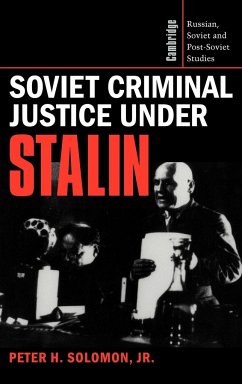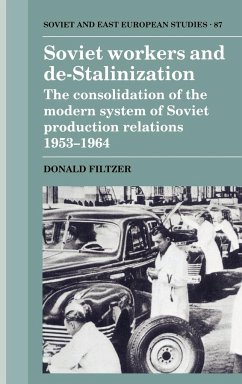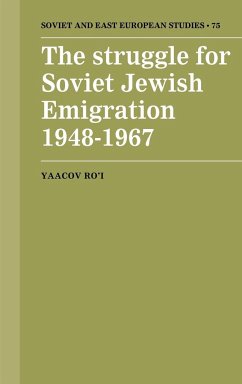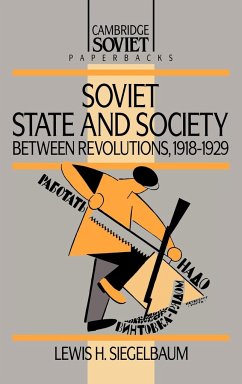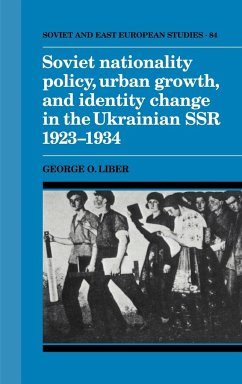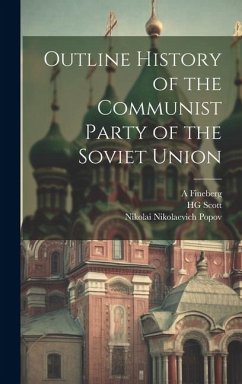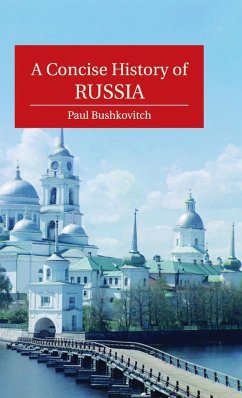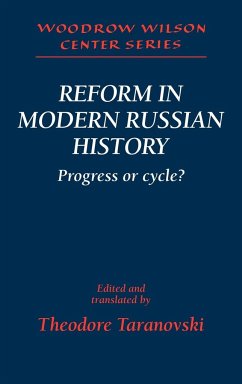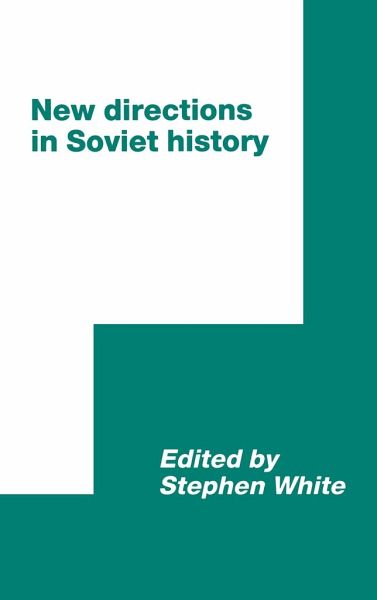
New Directions in Soviet History

PAYBACK Punkte
55 °P sammeln!
In this volume, scholars from both sides of the Atlantic, using a breadth of source material including Soviet archives and the local press, present recent thinking and research on Soviet history. New Directions in Soviet History opens with a provocative review of Gorbachev and Soviet history by Pierre Broue. This is followed by papers on the changing nature of mass culture in the 1920s and 1930s. Jeffrey Brooks explores how public identities were constructed in the party press, Denise Youngblood looks at the role of the cinema and James van Gelderen examines tensions within the arts between th...
In this volume, scholars from both sides of the Atlantic, using a breadth of source material including Soviet archives and the local press, present recent thinking and research on Soviet history. New Directions in Soviet History opens with a provocative review of Gorbachev and Soviet history by Pierre Broue. This is followed by papers on the changing nature of mass culture in the 1920s and 1930s. Jeffrey Brooks explores how public identities were constructed in the party press, Denise Youngblood looks at the role of the cinema and James van Gelderen examines tensions within the arts between the centre and the periphery. In the following section, Chris Ward, John Hatch, Catherine Merridale, John Russell and Robert Thurston discuss the distribution of authority in the workplace and, in particular, the politics of shopfloor culture between the wars. Finally, Evan Mawdsley assesses the changing nature of the Soviet political élite from the 1930s to the 1990s.
Table of contents:
Introduction; Part I. The Politics Of Soviet History: 1. Gorbachev and history Pierre Broue; Part II. Social Change And Cultural Policy: 2. Revolutionary lives: public identities in Pravda during the 1920s Jeffrey Brooks; 3. Entertainment or enlightenment?: popular cinema in Soviet society, 1921-1931 Denise Youngblood; 4. The centre and the periphery: cultural and social geography in the mass culture of the 1930s James van Gelderen; Part III. Politics, Industry and Shopfloor Relations: 5. The crisis of productivity in the New Economic Policy: rationalization drives and shop floor responses in Soviet cotton mills, 1924-1929 Chris Ward; 6. The politics of industrial efficiency during NEP: the 1926 rezhim ekonomiki campaign in Moscow John Hatch; 7. The Moscow party and the socialist offensive: activists and workers, 1928-1931 Catherine Merridale; 8. The demise of the shock brigades, 1931-1936 John Russell; 9. Reassessing the history of Soviet workers: opportunities to criticise and participate in decision-making, 1935-1941 Robert W. Thurston; Part IV. The Political Elite: From the 1930s to the 1990s: 10. Portrait of a changing elite: CPSU Central Committee members, 1939-1990 Evan Mawdsley; Index.
These original essays discuss Gorbachev and Soviet history, the changing nature of mass culture in the 1920s and 1930s, the politics of shopfloor culture between the wars, and the evolution of the political élite from the 1930s to the 1990s.
This volume presents work on the history of the Soviet Union.
Table of contents:
Introduction; Part I. The Politics Of Soviet History: 1. Gorbachev and history Pierre Broue; Part II. Social Change And Cultural Policy: 2. Revolutionary lives: public identities in Pravda during the 1920s Jeffrey Brooks; 3. Entertainment or enlightenment?: popular cinema in Soviet society, 1921-1931 Denise Youngblood; 4. The centre and the periphery: cultural and social geography in the mass culture of the 1930s James van Gelderen; Part III. Politics, Industry and Shopfloor Relations: 5. The crisis of productivity in the New Economic Policy: rationalization drives and shop floor responses in Soviet cotton mills, 1924-1929 Chris Ward; 6. The politics of industrial efficiency during NEP: the 1926 rezhim ekonomiki campaign in Moscow John Hatch; 7. The Moscow party and the socialist offensive: activists and workers, 1928-1931 Catherine Merridale; 8. The demise of the shock brigades, 1931-1936 John Russell; 9. Reassessing the history of Soviet workers: opportunities to criticise and participate in decision-making, 1935-1941 Robert W. Thurston; Part IV. The Political Elite: From the 1930s to the 1990s: 10. Portrait of a changing elite: CPSU Central Committee members, 1939-1990 Evan Mawdsley; Index.
These original essays discuss Gorbachev and Soviet history, the changing nature of mass culture in the 1920s and 1930s, the politics of shopfloor culture between the wars, and the evolution of the political élite from the 1930s to the 1990s.
This volume presents work on the history of the Soviet Union.





